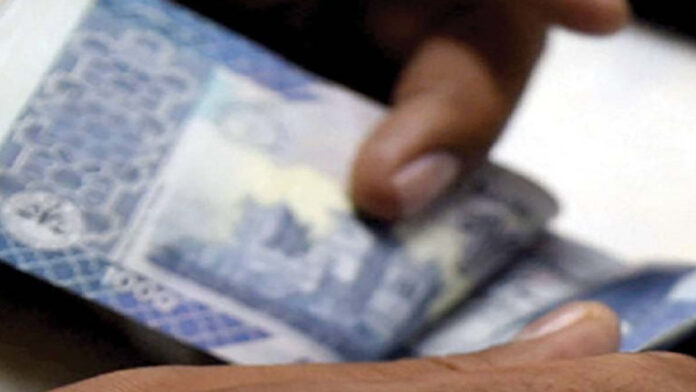KARACHI: Pakistan’s central bank on Tuesday left the key policy rate unchanged at 9.75% for the next six weeks, suggesting that the rate stands at an appropriate level to further reduce inflationary pressure and avoid an extended slowdown in economic growth in the ongoing fiscal year.
It, however, said it may convene the next monetary policy committee (MPC) meeting earlier than the scheduled date of April 19 to revise the rate, if needed, as the global petroleum price soared to a 14-year high of around $140 per barrel.
According to the State Bank, the spike in oil price may hurt Pakistan’s economy if it remained on the higher side in the medium to long run.
The global oil price has jumped in the wake of Russia-Ukraine war. The development has the potential to expand the country’s import bill manifold and keep the current account deficit at high levels.
Read also: Punjab’s real estate has potential to generate Rs.400 billion in tax revenue: world bank
Pakistan heavily relies on imported energy commodities. Their share stands at one-fourth in the import bill of the country. Looking ahead, the non-oil current account deficit is expected to decline, as import growth continues to slow down with moderating demand, while exports and remittances remain resilient.
“The outlook for the overall current account deficit is dependent on the path of international oil prices,” the central bank said in the latest monetary policy statement (MPS).
The State Bank of Pakistan (SBP) kept its projections unchanged for the inflation reading in the range of 9-11% and economic growth at 4-5% for the ongoing fiscal year 2021-22.
The status quo in the benchmark interest rate was in line with market expectations. The central bank left the rate unchanged for the second successive monetary policy announcement.
The SBP cumulatively increased the rate by 275 basis points during September-December 2021 to cool down the then overheated economy.
Earlier, it maintained the rate at 7% for 14 months (July 2020 to August 2021) to support business and economic activities during the Covid-19 pandemic.
“This decision (to maintain the policy rate) reflected the MPC’s view that the outlook for inflation has improved following the cuts in fuel prices and electricity tariffs announced last week as part of the government’s relief package,” the central bank said.
“At the same time, high-frequency indicators suggest that growth continues to moderate to a more sustainable pace,” it said.
“This moderation should help keep demand-side pressures on inflation at bay and contain non-oil imports, notwithstanding the significant uncertainty about the future path of global energy and food prices due to the Russia-Ukraine conflict.”
To recall, the government slashed petrol and diesel prices by Rs10 per litre each and revised down the power tariff by Rs5 per unit at the beginning of March.
It also announced that petroleum prices would be maintained at revised levels for the next four months – till the end of current fiscal year on June 30, 2022.
Despite the rise in global prices, the trade deficit contracted 10% (month-on-month) in February on top of the 29% decline recorded in January, “confirming the slowdown in domestic demand”, the SBP said.
“While the current account deficit rose in January (to a record high at $2.6 billion), this largely reflected lumpy imports of oil, vaccines and other items financed through loans and supplier credit,” the SBP noted.
“Excluding these imports, the deficit would have been about $1 billion lower, suggesting that the underlying trend in the current account balance is also moderating.”
The current real interest rates on a forward-looking basis are appropriate to guide inflation to the medium-term range of 5-7% in FY23, support growth and maintain external stability.
Economic growth
“Growth continues to moderate on the back of high prices and demand-easing measures … (it) is still expected around the middle of the previously forecast range of 4-5% in FY22,” the SBP said.
Since the last meeting, automobile sales and electricity generation have declined month-on-month. Sales of petroleum products and cement have decelerated since last October.
In the second quarter of FY22, growth in fast moving consumer goods (FMCG) sales dipped and general sales tax collection from services was lower than last year.
On the supply side, large-scale manufacturing (LSM) growth has been revised upwards following the rebasing, settling at around 5-6% (year-on-year) since October.
“Agricultural prospects have somewhat weakened, with key inputs such as fertiliser offtake and water availability during the Rabi season lower than last year. Cotton and wheat production will likely be less than previous estimates.”
Besides, private sector credit saw a net retirement in January in line with seasonal patterns, and broad money growth also decelerated. Automobile and personal loans slowed further due to tightening of prudential regulations and increased borrowing costs.
On the other hand, demand for loans for fixed investment and housing and construction continued to grow. Monetary conditions remain tighter in real terms, with private sector credit growth in negative territory.

